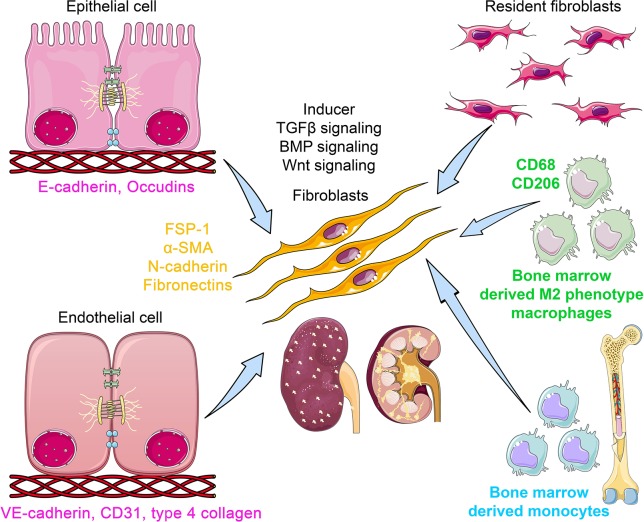Figure 1.
The origins of kidney myofibroblasts. Myofibroblasts are originated from resident fibroblasts, bone marrow-derived monocytes, bone marrow-derived M2 phenotype macrophages via macrophage-to-mesenchymal transition (MMT) process, from epithelial cell via epithelial-to-mesenchymal transition (EMT) program, and from endothelial cells via endothelial to mesenchymal transition (EndMT) program. During the process of EMT, epithelial cells loose the epithelial markers (E-cadherin and occludins) and gain the mesenchymal markers (FSP-1, α-SMA, N-cadherin, and fibronectin). In the EndMT process, endothelial cells lose the endothelial markers (CD31 and VE cadherin) and gain the mesenchymal markers. However, during the process of MMT, the myo-fibroblasts co-express M2 phenotype macrophage markers (CD206) with mesenchymal markers. TGFβ, BMP, and Wnt signaling play a crucial role in the activation of mesenchymal transition processes. The myofibroblasts are polar, pointed, and elongated in shape and ability to migrate and invade the neighbor cells.

